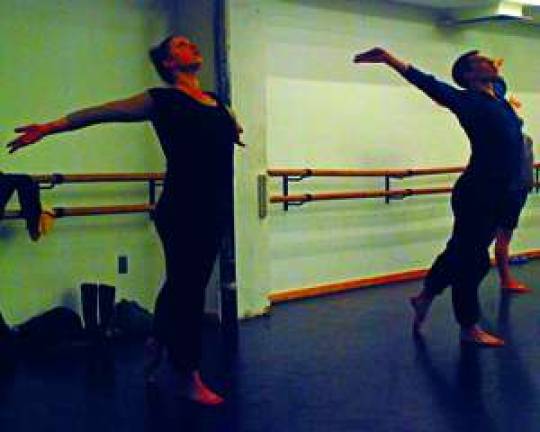Lower Manhattan's Dance New Amsterdam in danger of closing By Amy Eley
On the second floor of Dance New Amsterdam's downtown studio, a dancer balances his weight on his palms while extending his legs into the air. An arm's reach away, a woman practices her pirouettes. This studio, often referred to as DNA, is an epicenter of the city's dance community. "There is nowhere else in New York City for dancers to have space and time to develop their craft," said Martha Chapman, chairman of the board. "DNA is an integral linchpin in the community." But this linchpin, which has been part of the Manhattan dance scene since 1984, is at risk of becoming loosened from Lower Manhattan's culture scene within the coming weeks. The nonprofit organization, at 280 Broadway, lost a major sub-leaser of studio space in the summer months, leaving the organization with a $150,000 rent deficit. The studio has been able to gather $50,000 to pay part of the past due rent, through earned revenue, fundraisers, silent auctions and donations. Still, Catherine Peila, executive and artistic director of DNA, says the group is in crisis mode to produce the $100,000 difference. "It's a working beehive, and everyone is buzzing," said Peila. "There isn't a lazy bone in the house." Peila is not exaggerating; the studio swarms with activity. It houses six dance studios, a 150-seat theater and approximately 140 classes each week. On a recent evening, a teacher pounded a drum in studio one, providing eight dancers with a tempo as they dipped their torsos to the floor with their hips centered to stretch. The neighboring room teaches Gaga (no relation to the pop star), an Israeli-based choreography. And at the end of the hallway, the sound of handclaps and feet pattering on wood floors fills the air during a flamenco class. Even local politicians are providing support for the studio, including Julie Menin, former chair of Community Board 1 and a candidate for Manhattan borough president. "It brings a real support of arts to the area," said Menin. "People from all over the city come to attend." State Sen. Daniel Squadron says the studio is a driving force in downtown's efforts to recover from 9/11. In June, Squadron helped DNA reach a new lease agreement before the sub-leaser abandoned the nonprofit. "DNA has been an integral part of Lower Manhattan's recovery, and critical to our neighborhood's emergence as one of New York's burgeoning cultural centers," said Squadron. Phone calls to the studio's landlord were not returned. The studio's disappearance will be a loss to the city's dance culture, eliminating what many in the industry say is an essential stepping-stone for performers on the road to professional dancing, says Peila, the executive director. For aspiring dancers, the loss of the studio will cut deep. Fresh out of college in 2008, Anna Adams Stark, now 26, began taking dance classes while also getting involved with DNA's production apprenticeship program that teaches participants the ins and outs of producing a show. As a result, Stark says she has learned skills both on and off the dance floor that have led to paying jobs. After meeting modern dancer Alexandra Beller at DNA, Stark became her rehearsal stage manager. "Most of my jobs I've gotten are through people I've met in class or in the hallway at DNA," said Stark. "It really is a community. People really want to be here. People really want to learn. These are my people."

